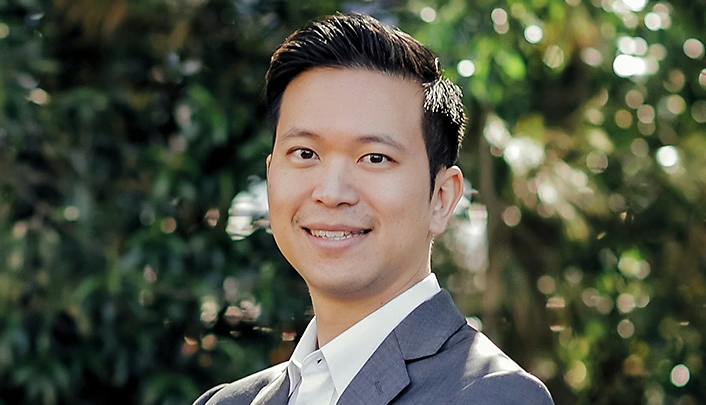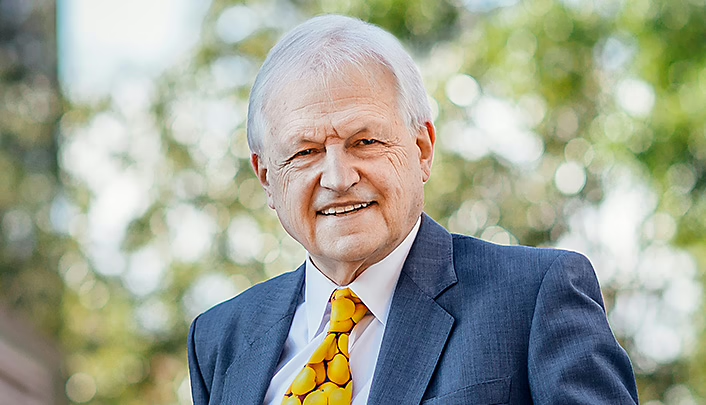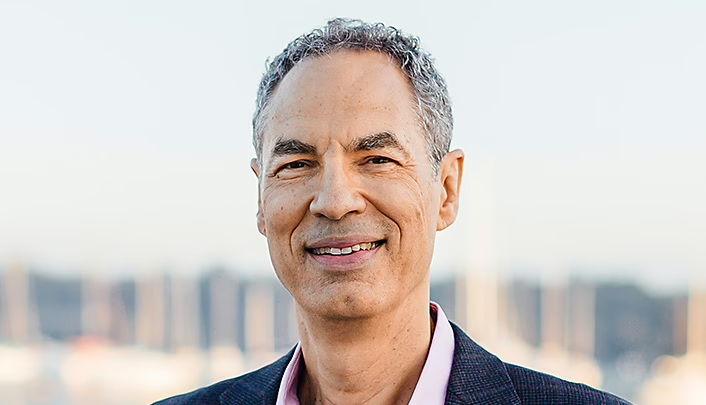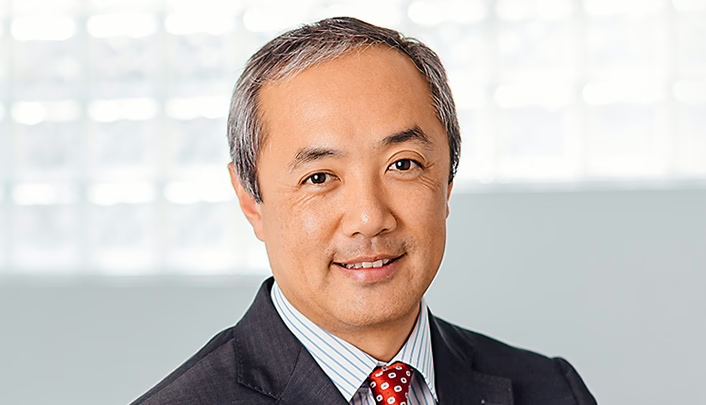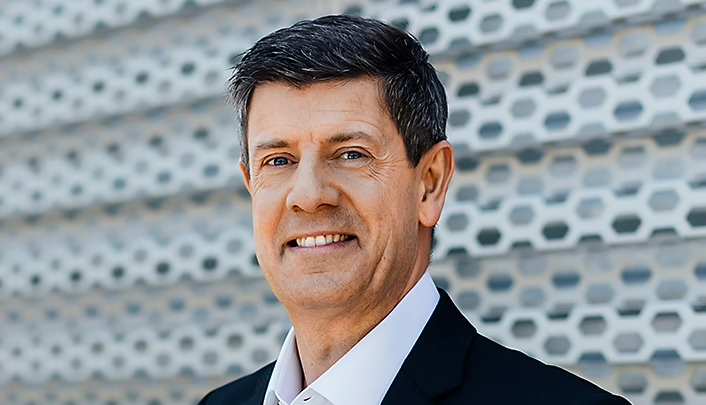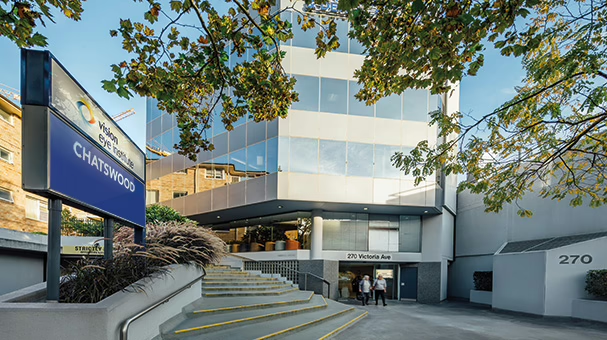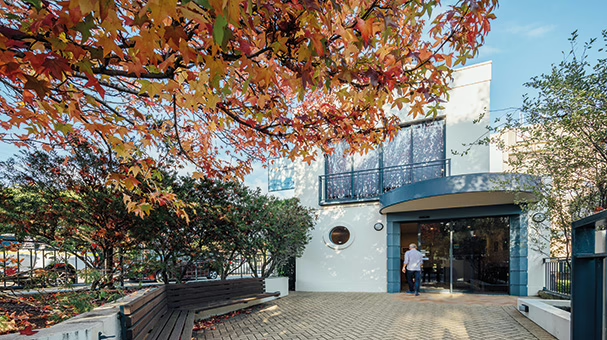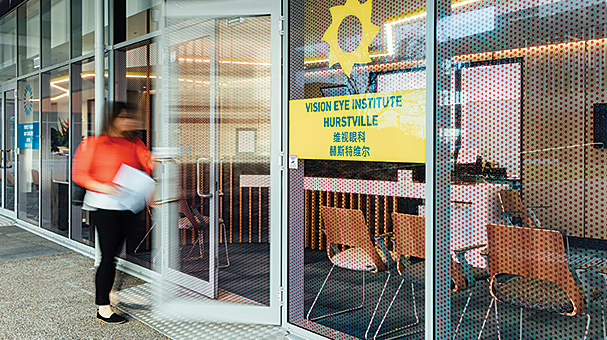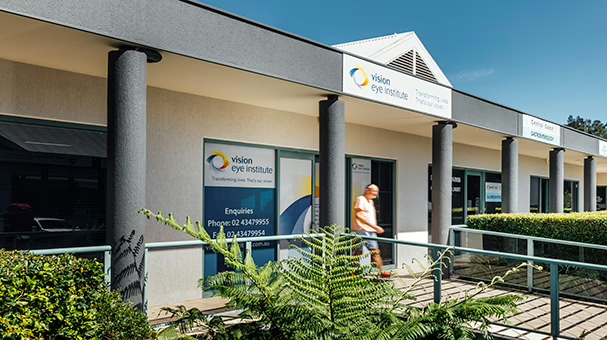Book a consultation
Book a consultation with one of our doctors or at one of our clinics below.
Do NOT use this form in an emergency – contact one of our clinics or your nearest hospital emergency department instead.
Some services may not be performed by your preferred doctor or at your preferred clinic. We will confirm this with you before making an appointment.
Glaucoma procedures at our Sydney clinics
Minimally invasive glaucoma surgery (MIGS)
Minimally invasive glaucoma surgery (MIGS), also known as micro-invasive or micro-bypass surgery, is a surgical treatment category for open-angle glaucoma in mild-to-moderate cases.
MIGS procedures involve creating a small incision, similar to a keyhole operation, and inserting tiny medical devices into the eye’s drainage canal. This improves fluid outflow, reducing pressure on the optic nerve and preventing further damage. MIGS procedures are highly regarded for their excellent safety record and short recovery time.
The following implants are currently approved for use in Australia:
- iStent inject®: This consists of two minuscule titanium stents (each less than 0.4 mm) implanted using a preloaded injector. By bypassing the blockage in the trabecular meshwork (the eye tissue responsible for drainage), these stents enable fluid to drain from the eye at the same rate it is produced.
- Hydrus®: This is a curved, flexible stent approximately the size of an eyelash. Once inserted, it bypasses the trabecular meshwork and acts as a scaffold, widening the natural drainage canal. This allows more fluid to flow through the canal into collector channels, effectively reducing pressure in the front of the eye.
- XEN® gel stent: This small, 6 mm shunt comprises non-degradable gelatin. Upon insertion, it softens and conforms to the shape of the eye. The XEN® gel stent diverts fluid through the trabecular meshwork into a small blister (bleb) located beneath the conjunctiva (the membrane that lines the inside of your eyelid), just below the upper eyelid.
The price of MIGS procedures will vary according to your preferred implant option. Following your initial consultation, your specialist will advise which implant best suits your visual needs.
Minimally invasive bleb surgery (MEBS)
Minimally invasive bleb surgery, also known as MEBS, involves using implants (e.g. XEN or Preserflo) to redirect fluid into a ‘bleb’ – a small blister of fluid on the eye’s surface (hidden underneath the eyelid) that allows fluid to drain out of the eye. In turn, increased fluid drainage reduces the pressure inside the eye.
MEBS procedures are less invasive and offer quicker recovery compared to traditional glaucoma filtration surgery. However, the long-term effectiveness of MEBS implants is still being evaluated.
Glaucoma filtration surgery
Trabeculectomy, also known as glaucoma filtration surgery, has been a longstanding traditional approach to treating glaucoma. This surgical procedure, which has been utilised for many decades, involves creating a tunnel to bypass the outflow obstruction. This enables fluid to drain from the eye into a small fluid-filled blister on the eye’s surface called a ‘bleb.’ To prevent the closure of the newly created pathway, an anti-scarring agent called mitomycin C is employed.
Glaucoma filtration surgery is highly effective but entails a prolonged recovery period. It is typically reserved for patients with moderate to advanced stages of glaucoma.
Glaucoma drainage devices
Glaucoma drainage devices, including Baerveldt, PAUL or Molteno, are sizeable implants designed to regulate intraocular pressure. These devices consist of a small tube that redirects fluid to a plate positioned beneath the upper eyelid, resting on the surface of the eye. Typically, this operation is reserved for advanced cases of glaucoma in which trabeculectomy is not appropriate or has been unsuccessful.
Laser surgery
Our New South Wales clinics offer laser treatment for glaucoma, eliminating the need for admission to a day surgery facility. The procedure is conducted using anaesthetic eye drops to ensure minimal or no discomfort. Your specialist will consider factors such as your lifestyle and eye health to determine the most suitable type of laser treatment for your visual requirements. The options may include:
- Selective laser trabeculoplasty (SLT): This technique involves directing laser pulses at the drainage outflow channels to stimulate cell activity, clear debris and enhance fluid outflow. As a result, intraocular pressure is lowered. SLT is a very safe procedure, but its effects may diminish after a few years.
- YAG laser peripheral iridotomy: This approach is specifically used for angle-closure glaucoma. It involves creating a channel in the iris (the coloured part of the eye). This channel opens up the drainage angle and prevents disease progression.
The price of laser surgery for glaucoma will vary according to your preferred laser option. Following your initial consultation, your specialist will advise which option best suits your visual needs.
Which specialists in Sydney are best qualified to treat glaucoma?
Any ophthalmologist is qualified to treat glaucoma. However, some ophthalmologists undergo additional training specific to glaucoma. These glaucoma specialists have more experience and are better equipped to handle complex cases – e.g. if a patient has a rare form of glaucoma or their glaucoma is not responding well to treatment. Glaucoma specialists with access to state-of-the-art technology to perform the latest procedures, such as the minimally invasive glaucoma surgery (MIGS) we offer at our Sydney clinics, are even better placed to treat glaucoma. Learn more about our Sydney glaucoma specialists.
Are there different types of glaucoma treatments available in Sydney clinics?
There is a broad range of treatments available to manage the many types and stages of glaucoma. We offer a range of services to treat all stages of glaucoma at our Sydney clinics. They include:
- Medication (such as eye drops or oral medications)
- Minimally invasive glaucoma surgery (MIGS)
- Minimally invasive bleb surgery (MEBS)
- Glaucoma filtration surgery
- Glaucoma drainage devices
- Selective laser trabeculoplasty (SLT)
- YAG laser peripheral iridotomy.
How does the Australian health system cover the costs of glaucoma treatments in Sydney?
Medicare covers the costs of public glaucoma treatment, but wait times are substantial. In 2018–19, the average wait time to receive elective eye surgery was 334 days for 90% of patients.1
Medicare subsidises some of the costs of private glaucoma treatment, and private health insurers may cover the rest. The remaining out-of-pocket cost depends on your private health insurance coverage and the type of glaucoma treatment you have. You will need an eye assessment to receive an accurate quote for your glaucoma treatment. Private glaucoma treatment has minimal wait times, although there could be a wait time associated with your health fund claim approval. You can also choose your glaucoma specialist with private treatment – this can be helpful as glaucoma requires regular check-ups.
References:
- Australian Institute of Health and Welfare (AIHW). Eye Health. AIHW;2021. Available at <https://www.aihw.gov.au/reports/eye-health/eye-health/contents/treatment-and-management> [Accessed online 9 November 2023].
Can I access minimally invasive glaucoma surgery (MIGS) in Sydney clinics?
Minimally invasive glaucoma surgery (MIGS) is one of the latest advances in glaucoma treatment for mild-to-moderate cases of primary open-angle glaucoma and some secondary glaucoma cases. MIGS involves the surgical insertion of tiny drainage devices, millimetres in size, into the drainage network of the eye to reduce pressure in the eye and prevent glaucoma progression. Our Chatswood, Drummoyne and Hurstville clinics offer MIGS. Contact a Vision Eye Institute Sydney clinic.
How do glaucoma treatments available in Sydney compare to international standards?
The glaucoma treatments available at Vision Eye Institute Sydney clinics are comparable to international standards – this is largely due to the expertise of our glaucoma specialists who are globally recognised for their clinical experience and contributions to the field.
We also provide the latest equipment and treatments at our Sydney clinics. Some of the treatments we provide include minimally invasive glaucoma surgery (MIGS), minimally invasive bleb surgery (MEBS) and laser glaucoma surgery. Learn more about the glaucoma treatments offered at Vision Eye Institute Sydney clinics.
What post-operative care is required after undergoing glaucoma treatment in Sydney?
Post-operative care varies depending on the type of glaucoma surgery you receive. Typical post-operative care includes medicated eye drops to support the healing of your eyes and post-operative appointments with your surgeon to monitor the recovery of your eyes.
After your initial pre-surgical assessment, your surgeon will advise you on which surgical options are best for your visual goals and lifestyle. Detailed post-operative care instructions can be provided once your type of glaucoma surgery has been decided.
Book online or call your clinic directly to book your initial glaucoma assessment.
What advancements have been made in glaucoma treatment in Sydney in the last 5 years?
Minimally invasive glaucoma surgery (MIGS) is one of the latest ground-breaking glaucoma advancements worldwide. MIGS involves minute incisions to insert a tiny device into the drainage network of the eye (the trabecular meshwork). MIGS improves fluid drainage within the eye to limit glaucoma progression.
Hydrus®, XEN® and iStent inject® are the MIGS technologies available at our Sydney clinics. iStent inject® is a recently developed MIGS technology and has been available in Australia since 2014. iStent inject® features the insertion of 2 stents (each less than 0.4 mm in diameter). Learn more about iStent inject® for glaucoma.
Do optometrists in Sydney offer screening for early detection of glaucoma?
At our Vision Eye Institute Sydney clinics, our optometrists offer multiple screening options to suit your specific glaucoma risk.
If you are 50 years or older, we provide early detection screening every 2 years. However, if you have a family history of glaucoma or are of Asian or African descent, we recommend 2-yearly screening from 40 years old onwards. If one of your family members has advanced glaucoma, we offer early detection screening from the time when you are 10 years younger than your relative’s age at glaucoma diagnosis.
Our glaucoma specialists may advise additional early detection screening depending on your individual risk of developing glaucoma.
Book online or call your clinic directly to book your glaucoma screening appointment.
Which hospitals or clinics in Sydney have the latest equipment for glaucoma diagnosis and treatment?
You will need to enquire with the specific hospital or clinic to determine which equipment and services they use.
At our Vision Eye Institute Sydney clinics, we provide state-of-the-art technology, including:
- SLT and YAG lasers
- Baerveldt®, PAUL® and Molteno® glaucoma drainage devices
- XEN® and Preserflo® minimally invasive bleb surgery (MEBS)
- iStent inject®, Hydrus® and XEN® minimally invasive glaucoma surgery (MIGS).
Learn more about the glaucoma services offered at Vision Eye Institute Sydney clinics.
Do I need a referral from a GP to see a glaucoma specialist in Sydney?
Either your GP or optometrist can make a referral for you to see a glaucoma specialist. This referral ensures your eligibility for the Medicare rebate on your glaucoma appointments and treatments. On receiving your referral, you can book your glaucoma appointment at one of our Sydney clinics online or you can call a clinic directly.
What is the success rate of glaucoma surgeries performed in Sydney's top hospitals?
Glaucoma surgery success rates vary depending on the type of glaucoma surgery and the type and severity of glaucoma. Due to this variability, it is not possible to give a single success rate.
All glaucoma surgeries offered at Vision Eye Institute in Sydney have an evidence base of high-quality international research and clinical experience to support their effectiveness. We recommend you book an appointment with a glaucoma specialist to discuss which treatment is appropriate for you.
Do private health insurance funds in Sydney offer coverage for innovative glaucoma treatments?
Many private health funds cover the latest glaucoma treatments, such as minimally invasive glaucoma surgery (MIGS). Which glaucoma treatments are covered by your private health fund depends on your health insurer and insurance plan. To find out which services you can claim, contact your private health fund directly.
Our glaucoma specialists in Sydney
Our team of experienced New South Wales surgeons are some of the most highly regarded in Australia. With access to the latest tests and treatments, our doctors are experienced in diagnosing and treating both early and advanced glaucoma. They also tailor management plans to meet the visual needs of each patient, while taking into consideration treatment costs.
-
Dr Jason Cheng
BSc MBBS FRCOphth FEBO FAMS FRANZCO
Locations
- Hurstville
Book a consultationwith Dr Jason ChengOur glaucoma clinics in Sydney
Our glaucoma surgeons consult at four fully equipped clinics located in New South Wales, Australia. Meanwhile, glaucoma surgery is performed at one of our state-of-the-art, accredited day surgery facilities.
-
Chatswood
- 02 9424 9999
- Email us
-
Level 3, 270 Victoria Ave
Chatswood 2067 nsw -
M–F 8 am–5.30 pm
Sat Closed
Sun Closed
-
Drummoyne
- 02 9819 6100
- Email us
-
1 Bayswater St
Drummoyne 2047 nsw -
M–F 8.30 am–5 pm
Sat Closed
Sun Closed
-
Hurstville
- 02 9330 6900
- Email us
-
99a Forest Rd
Hurstville 2220 nsw -
M–F 8 am–5 pm
Sat Closed
Sun Closed
-
Tuggerah Lakes
- 02 4347 9955
- Email us
-
Suite C3, Kanwal Medical Complex, 654 Pacific Hwy
Kanwal 2259 nsw -
M–W 8 am–4:30 pm
Thu Closed
Fri 8 am–4:30 pm
Sat Closed
Sun Closed
